
Stockbyte/Stockbyte/Getty Images
You don't have to be from the South to appreciate freshly baked cornbread. Whether you add sugar or not, the corn's own natural sweetness gives it a winning flavor, making it suitable for use as a side dish, a snack in its own right, or – with a drizzle of honey or something sweet – even a quick dessert. Despite its easygoing charm, cornbread has one distinctive flaw: It can be dry and crumbly, if it's not done right. Longtime bakers have several strategies for coping with this.
Understanding the Problem
So what makes cornbread crumbly? Mostly, it's the ground-up grain's thirst. Cornmeal is relatively coarse, compared to the wheat flour that's used in most baking, so it takes longer to absorb the liquids from the recipe. While wheat flour is fully hydrated within seconds, cornmeal keeps absorbing moisture even after it's baked. That's how you can have a perfectly good texture when it's fresh from the oven, and then maddeningly crumbly cornbread just an hour later.
Adding Moisture
One of the simplest techniques for non-crumbly cornbread, unsurprisingly, is simply to let it sit for a while after it's mixed. The cornmeal has more time to absorb moisture before it's baked, and the end result is a moister cornbread. Sometimes, though, the extra rest leaves your batter too stiff to pour into the pan. In that case you'll just need to stir in some extra liquid, to loosen it again. It doesn't have to be milk or buttermilk, though these are both common choices. Plain yogurt adds a buttermilk-like tang, for example, and creamed corn doubles down on the corn flavor and natural sweetness.
Adding Fat and Sweeteners
Another strategy calls for the addition of extra fat to your basic cornbread recipe. This doesn't actually moisten your cornbread, as adding extra liquid does, but – because it softens the cornbread's crumb and makes it feel moister – makes it less crumbly and more pleasant to eat. The extras can come in many forms, from oil or egg yolks to melted butter or shortening. The sweeteners in your cornbread also play a role in softening its texture. Southern-style recipes usually omit sugar, but it's useful. Changing your recipe from plain granulated sugar to a moisture-enhancing sweetener such as brown sugar, honey or corn syrup can help too.
Adding Protein
Unless you're a serious purist, your cornbread recipe probably includes wheat flour as well as cornmeal. That's because gluten, the protein in wheat flour, helps hold the cornbread together after it's baked. A cornbread with flour in it is lighter and softer than one without it, and much less crumbly. You can convert your existing version to a non-crumbly cornbread recipe simply by reducing the cornmeal slightly, and increasing the flour. Yogurt increases your protein content as well, but your real ace in the hole is eggs. When you add an egg, you're adding protein, moisture and fat all in one convenient package, so they should be your go-to tweak for any tasty-but-crumbly cornbread.
Related Articles
Can You Use Masa Harina in Cornbread?

What Can I Use as an Egg Substitute ...

What Can I Use as an Egg Substitute ...
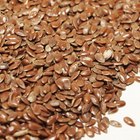
How to Bake With Flax Seed
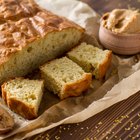
How Many Calories Are in Jiffy ...

How to Make Bread Chewy

How to Substitute Applesauce for Oil in ...

What Happens When You Forget to Put ...

Chocolate Chip Cookie Dough Brownies
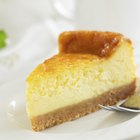
Gluten-Free Cheesecake Nut Crust
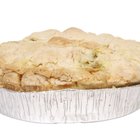
How to Pre-Bake Puff Pastry
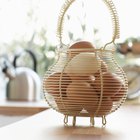
How Much Applesauce Do You Substitute ...

How to Bake a Really Moist Boxed Cake
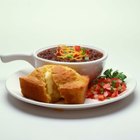
How to Make Cornbread in a Cast-Iron ...
How to Substitute Applesauce for Butter ...

How to Substitute Agave Nectar for Sugar

How Much Melted Shortening Do I Use in ...

How to Make Bread Tender

The Differences in Baking with Jumbo & ...
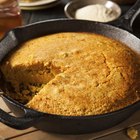
How to Make Southern Fried Cornbread
References
Tips
- If you like the flavor balance of your favorite cornbread recipe but simply want improve the crumbly consistency, let the batter sit for at least 30 minutes before baking. Because cornmeal absorbs moisture, letting it sit allows greater moisture absorption before cooking. After allowing it to sit, follow your general baking recommendations.
Writer Bio
Fred Decker is a trained chef and prolific freelance writer. In previous careers, he sold insurance and mutual funds, and was a longtime retailer. He was educated at Memorial University of Newfoundland and the Northern Alberta Institute of Technology. His articles have appeared on numerous home and garden sites including GoneOutdoors, TheNest and eHow.
Photo Credits
Stockbyte/Stockbyte/Getty Images